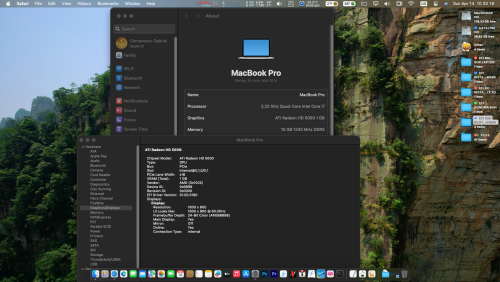It’s no secret why Apple decided to utilize ARM processor technology in both its wildly successful iPhone and iPod Touch. Besides being one of the most cost-effective of today’s embedded chipsets, the ability to run at higher clock speeds without sacrificing power consumption was clearly an attractive feature, considering Apple’s needs . But not to be outdone, it seems Intel is banking on its newly introduced line of Atom embedded processors, not only to meet, but exceed such crucial features in the mobile computing world. Of course, what does such a move mean for Apple?
It’s clear that Apple wants to push the boundaries of how and where media can travel, evident through such consumer brands as iTunes and the AppleTV. The ability to acquire, transfer and experience media as fluidly and seamlessly as possible appears to be one of Apple’s major focuses - and the framework is already in place today. The newly enhanced iTunes store, when fully mature, should continue to offer a one of the easiest multimedia experiences available. Apple hardware, meanwhile, continues to demonstrate a degree of coherence and compatibility almost unheard of from any other company.
One of Atom’s prime focuses is on what Intel refers to as the mobile internet devices, or MIDs – smaller than UMPCs, but still delivering the same rich multimedia and internet-driven experiences consumers have grown accustomed to. It’s not hard to see that Apple shares some of these same goals – the iPhone’s Safari, for example, has set the bar for the mobile browsing experience, allowing users to experience media online – on-the-go – in previously unheard of ways. Such similar focuses make it only natural to wonder – what could Apple do with such a platform?
While the Atom’s size may be a little on the large side for the traditional mobile phone, it could prove to be a powerful asset for future unconventional devices, similar in nature to the iPhone. Much like its ARM rivals, the Atom chipset claims aim to offer superior clock speeds at but a fraction of the energy consumption. This is crucial, particularly when used in mobile phones and other devices. A generous 1GB of ram is the chipset’s limit, while WiFi, Bluetooth and even WiMax round out Intel’s networking options. Also unique is Intel’s dedicated video decoding hardware; while Apple already employs such technology in everything from it’s iPods to iPhones, what makes Intel’s offering unique is its capability to decode both 720p and 1080i HD video. One can only imagine how well such an implementation would work with its iTunes online store – especially with Apple’s recent foray into HD content distribution.
Still, one of the most attractive reasons for employing the Atom chipset would be Apple’s return to an x86 platform. Currently, Apple’s OS X is being developed for three distinct architectures – x86, PPC and now ARM, for both the iPhone and iPod Touch. Reducing the number of architectures to two (and eventually one, with PPC’s inevitable demise), would not only free up time and money, but reduce the risk of diluting OS X’s core development. Also interesting is Intel’s decision to make its Atom processors compatible with its Core 2 Duo instruction set – complete with technologies like hyper-threading and SSE3. Such capabilities would not only make modifying existing OS X code a simpler affair, but optimization as well.
It will be interesting to see what the future holds, not only for Intel’s Atom platform, but the entire MID market. Apple’s no stranger to architecture switches, and it definitely seems that - on the surface, at least - Intel has an offering that will be sure to compete with some of ARM’s most successful chipsets. Yet, only time will tell whether such technologies will find their ways into the hands of consumers – perhaps even in the form of another Apple device.











Recommended Comments